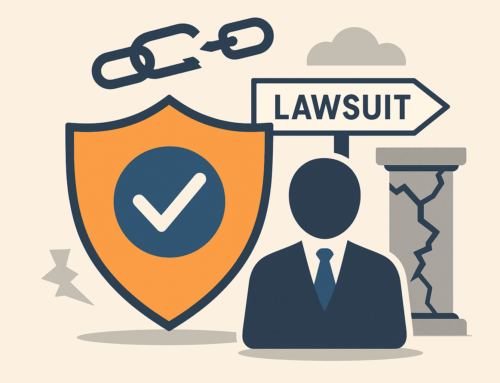Why CoStar’s $1 billion lawsuit against Zillow matters
CoStar Group’s new federal lawsuit against Zillow may turn out to be the largest copyright infringement case in real estate history. The claim centers on more than 46,000 photographs CoStar says were used without permission. But this is more than a battle over images – it’s a full-frontal challenge to how major tech platforms handle copyright, data syndication, and competitive strategy in real estate.
I’ve followed this issue for years, including as an expert witness in the original VHT v. Zillow case. This new suit is built on the foundation of that earlier case but raises the stakes dramatically. It’s not just about damages. It’s about the future rules of engagement in digital real estate.

What’s really in play
The lawsuit didn’t appear out of nowhere. CoStar now owns what used to be VHT Studios, the photography firm that previously took Zillow to court. That acquisition path tells its own story: VHT was sold to Matterport in 2022, and Matterport was acquired by CoStar in early 2025. By August, VHT’s operations had been shut down, but its intellectual property, including the Zillow litigation playbook, stayed in CoStar’s hands.
The complaint claims Zillow displayed copyrighted images across Zillow.com over 250,000 times between May and July of this year. And through syndication deals, those same images showed up on Redfin and Realtor.com as well. Many of them still bear CoStar’s watermark. The case is more about CoStar’s commercial and rental images and not images sourced from broker single family residential listings via the MLS data feed.
What we learned from the first time around
The VHT v. Zillow decision established a legal precedent that will be hard for Zillow to escape now. Three things matter most:
- Volitional conduct: The court said platforms can only be held liable for direct infringement if there’s evidence of active participation. In the earlier case, Zillow got hit for roughly 3,900 images that their team actively tagged for search. Passive hosting wasn’t enough. But active curation? That was enough to establish liability.
- Fair use doesn’t stretch that far: Zillow’s attempt to argue transformative fair use failed. The court was clear; displaying entire images to support a consumer-facing product isn’t protected if the use doesn’t align with the intent of the Copyright Act (things like commentary, news reporting, or education).
- History matters: The court acknowledged Zillow’s past behavior around copyright. That pattern could come back to haunt them now, especially as CoStar frames this as willful and repeated infringement.
What makes this case more dangerous
The VHT case involved about 28,000 images and resulted in a $1.9 million judgment. The CoStar case involves over 46,000 images and is seeking more than $1 billion in damages. That’s a different magnitude entirely.
Here’s why Zillow should be concerned:
- Volume and documentation: CoStar reportedly submitted an 1,800-page document cataloging every image allegedly infringed. That’s not a casual claim… it’s a detailed brief aimed at preempting any ambiguity.
- Watermarks still visible: These aren’t anonymous photos floating on the web. The watermark evidence will make it hard for Zillow to claim they didn’t know the images were owned.
- Syndication risk: This isn’t just about Zillow.com. Because Zillow syndicates listings to Redfin and Realtor.com, the alleged infringement was broadcast even further. That adds to both the scale and the complexity.
- Repeat offender narrative: CoStar’s legal team is pointing to past cases to argue Zillow should’ve known better. That raises the potential for enhanced, even punitive, damages.
Zillow’s likely defense and why it’s a long shot
The fair use argument will be tested again, but the four-factor test isn’t doing Zillow any favors:
- Purpose and character: Zillow uses the images in a commercial context to drive traffic and ad revenue. Courts are unlikely to view that as transformative.
- Nature of the work: These are creative, professional-grade real estate photographs. That carries strong protection under copyright law.
- Amount used: Zillow displays the full images, not cropped versions or thumbnails. That hurts the fair use claim.
- Market effect: CoStar can argue Zillow’s use directly undermines their ability to license and monetize this photography. That’s a key factor, and a strong one.
Taken together, Zillow’s position looks weaker than it did in the VHT case, not stronger.

Why this matters beyond the lawsuit
This isn’t just a CoStar-Zillow clash. It’s a wake-up call for the entire industry. The implications ripple across MLSs, brokerages, portals, and vendors.
Licensing isn’t optional: MLSs and tech firms need to revisit every content feed and image license they’re using. It’s not enough to assume permission. That assumption is exactly what gets companies into trouble.
Copyright isn’t just a legal issue, it’s a data integrity issue: If platforms can’t guarantee the provenance of the content they display, the trust model falls apart. Consumers and professionals alike need to know the data is legitimate.
Consolidation breeds risk: When a small number of companies control the distribution of massive amounts of content, any misstep scales instantly. Syndication multiplies the exposure—and the liability.
What brokers and MLSs should take away
Brokers, MLS executives, and tech leaders shouldn’t view this as a distant conflict between two giants. It’s directly relevant to how they operate.
- Copyright holders need a strategy. Enforcement isn’t easy, but letting violations slide undermines the value of your content.
- Licensing language matters. Vague or open-ended agreements aren’t enough. Explicit terms about usage rights and enforcement need to be in place.
- Every integration introduces exposure. As tech stacks grow more complex and third-party tools proliferate, legal review becomes a must, not a suggestion.
Looking ahead
CoStar and Zillow are now locked in a high-stakes battle that may last for years, but the ripple effects have already started. Whether the case settles or goes the distance, the industry is going to need to evolve.
We’ll likely see new standards for image licensing. We may see syndication strategies restructured. And we’ll almost certainly see every portal and MLS reevaluate their copyright risk profiles.
The lawsuit is about photos, but the outcome will help define how real estate handles data, rights, and competition in a digital future that’s already here.
If you are a broker and you do not have a solid copyright strategy, start with this article about who owns property photos, and review these sample agreements offered by the National Association of REALTORS®.




